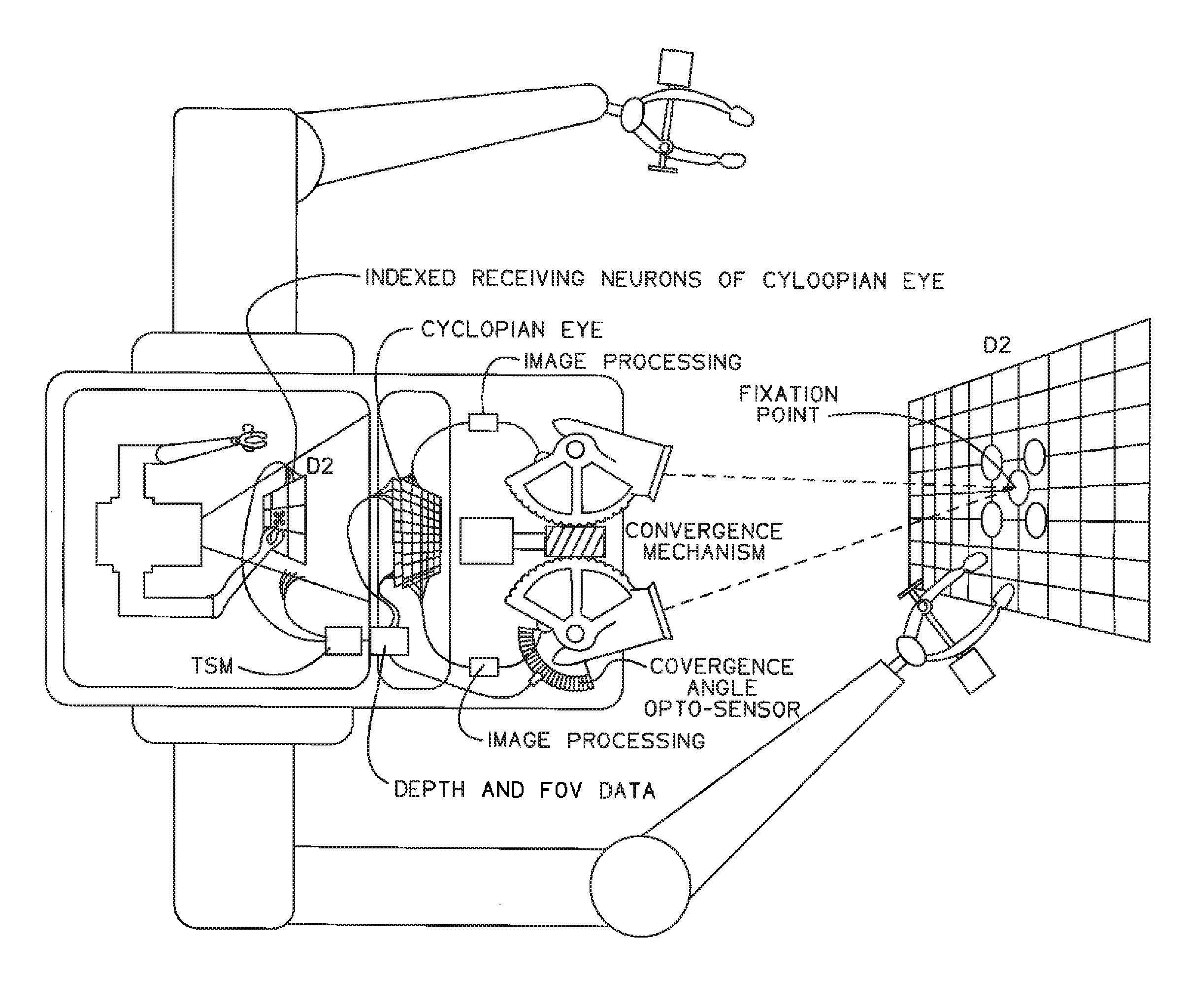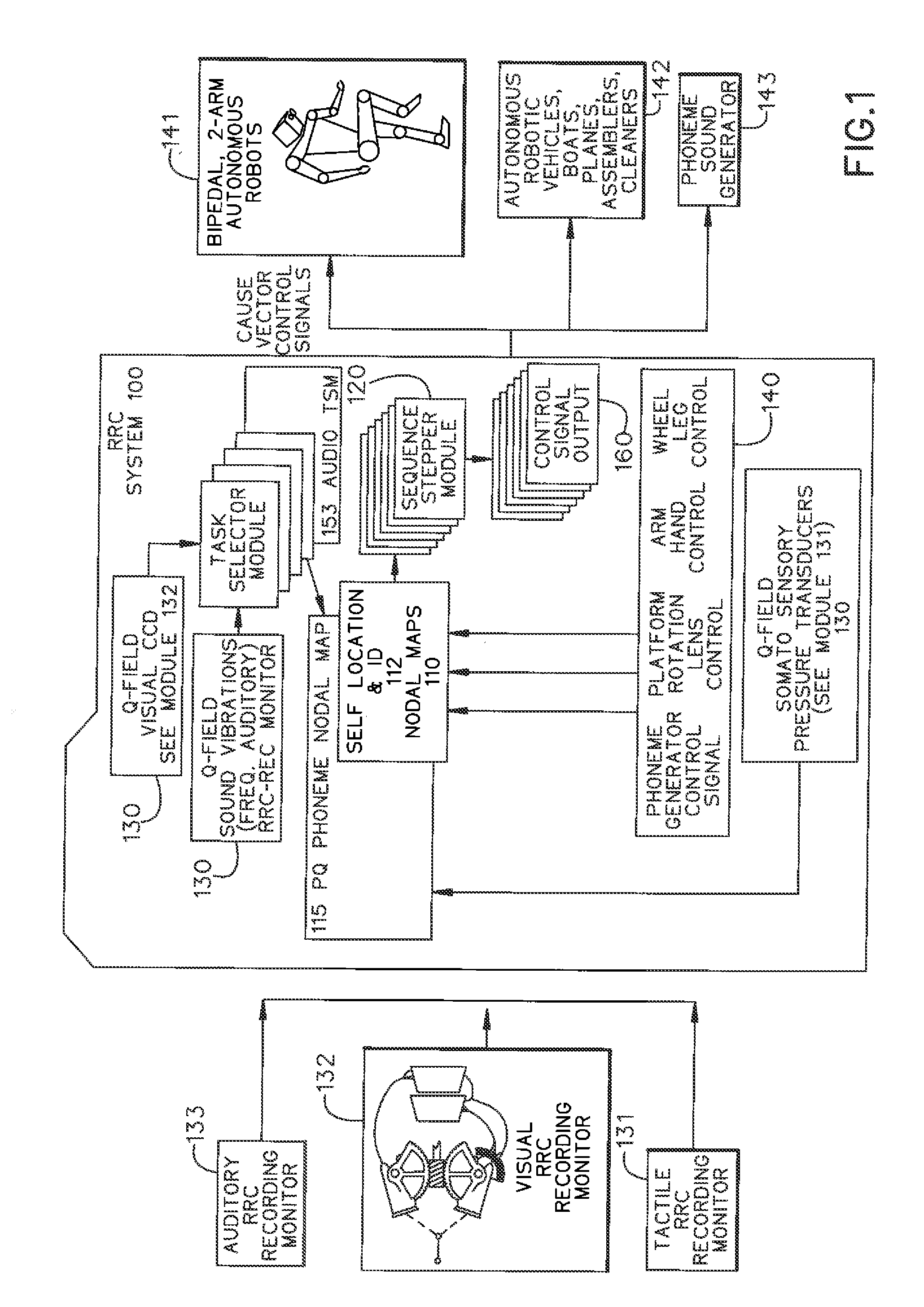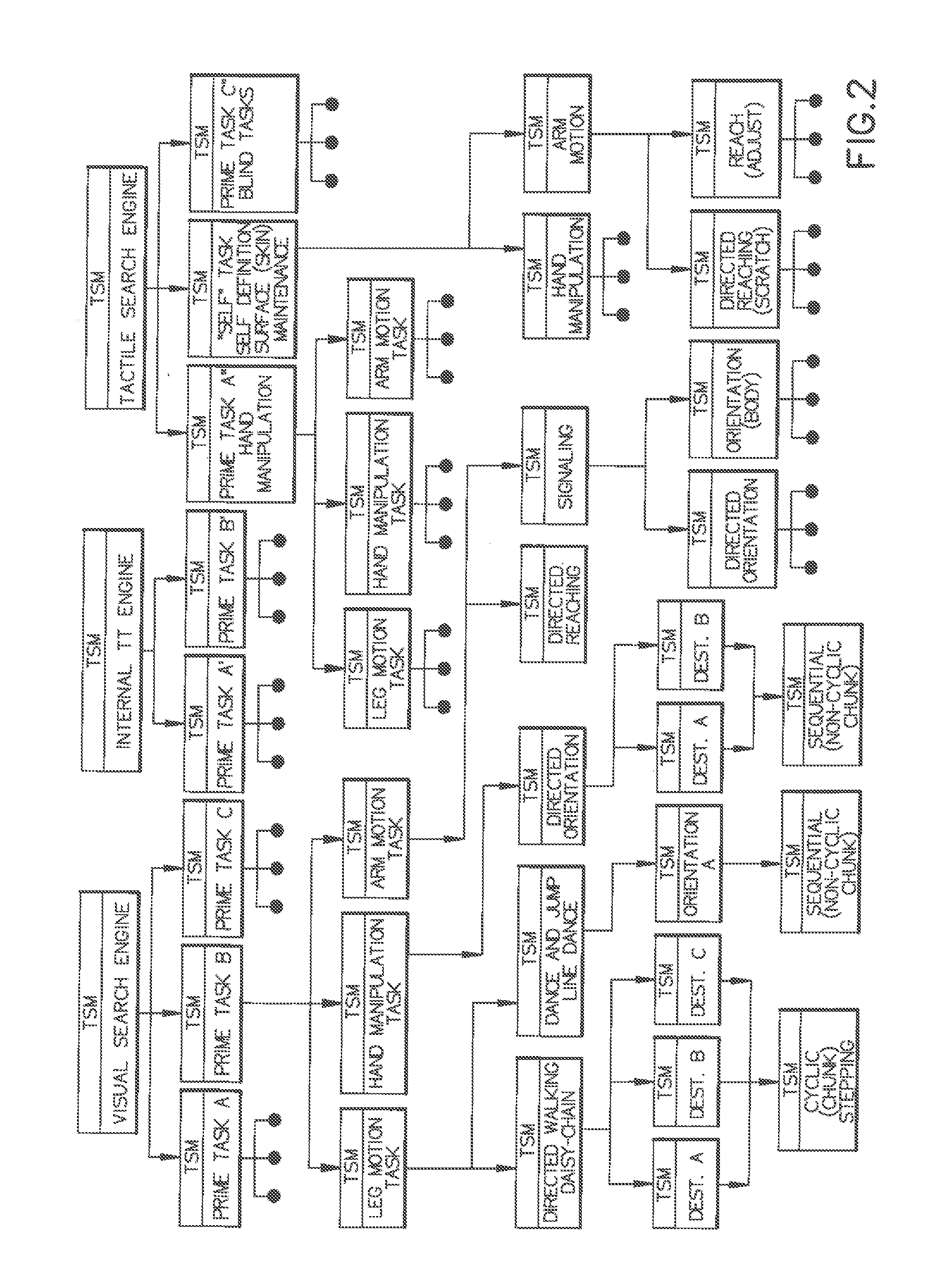Intelligent visual humanoid robot and computer vision system programmed to perform visual artificial intelligence processes
- Summary
- Abstract
- Description
- Claims
- Application Information
AI Technical Summary
Benefits of technology
Problems solved by technology
Method used
Image
Examples
Embodiment Construction
RRC-Humanoid Robots
[0027]Embodiments of the Invention Described in this Disclosure Pertain to Intelligent Visual RRC-Humanoid Robots.
[0028]This disclosure describes an RRC-based computer vision system called a visual RRC-Humanoid Robot that is programmed to reach human-like levels of visual-AI. This level of visual AI is analogous to the intelligence that may be gained from the human ‘seeing’ experience. However, the RRC-controller system has already been patented by the authors and is described in the related applications section. The innovativeness of this disclosure lies in the design of the human-like visual recording monitor, the interface circuit between the recording monitor and the RRC, and the programming of the system so that it can reach human-like levels of visual-AI, analogous to human ‘seeing.’ The following is a general discussion relating to human-like AI gained by the mechanical analogues to the human external sensors (tactile, visual, auditory, olfactory, gustatory...
PUM
 Login to View More
Login to View More Abstract
Description
Claims
Application Information
 Login to View More
Login to View More - R&D
- Intellectual Property
- Life Sciences
- Materials
- Tech Scout
- Unparalleled Data Quality
- Higher Quality Content
- 60% Fewer Hallucinations
Browse by: Latest US Patents, China's latest patents, Technical Efficacy Thesaurus, Application Domain, Technology Topic, Popular Technical Reports.
© 2025 PatSnap. All rights reserved.Legal|Privacy policy|Modern Slavery Act Transparency Statement|Sitemap|About US| Contact US: help@patsnap.com



